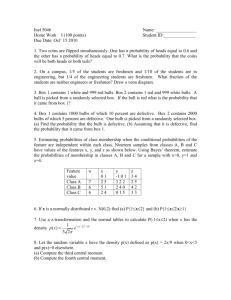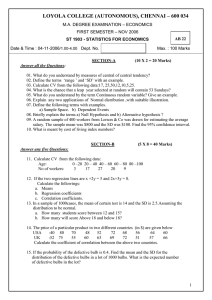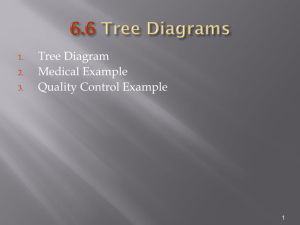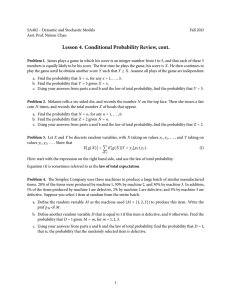Probability Exercise problems-1
advertisement
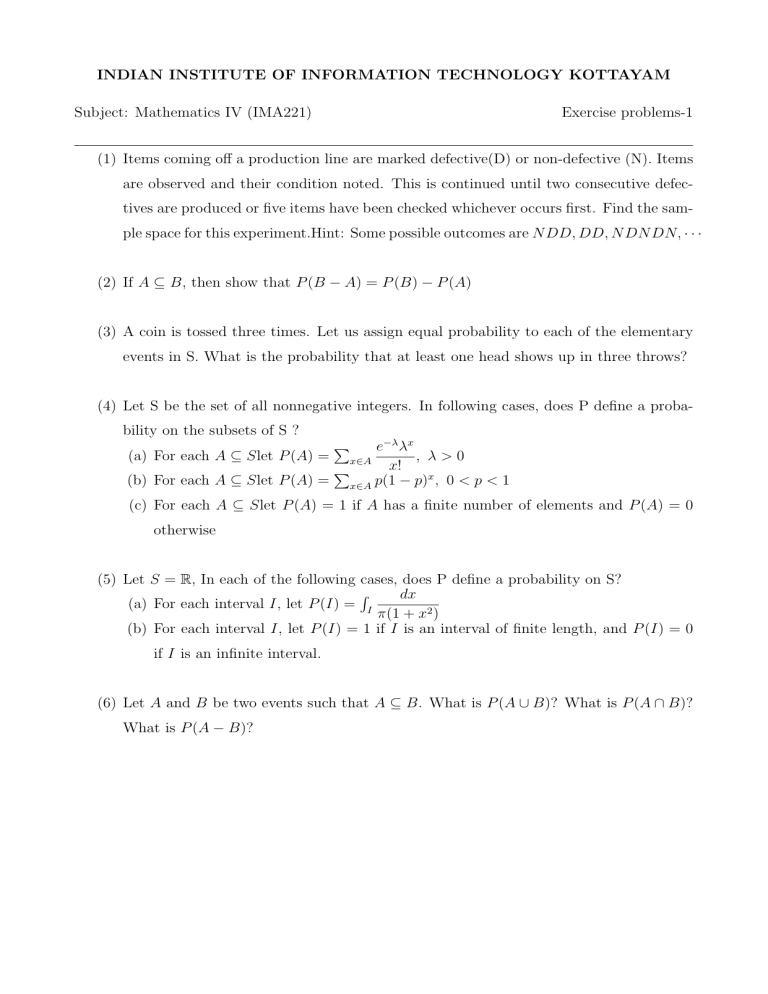
INDIAN INSTITUTE OF INFORMATION TECHNOLOGY KOTTAYAM Subject: Mathematics IV (IMA221) Exercise problems-1 (1) Items coming off a production line are marked defective(D) or non-defective (N). Items are observed and their condition noted. This is continued until two consecutive defectives are produced or five items have been checked whichever occurs first. Find the sample space for this experiment.Hint: Some possible outcomes are N DD, DD, N DN DN, · · · (2) If A ⊆ B, then show that P (B − A) = P (B) − P (A) (3) A coin is tossed three times. Let us assign equal probability to each of the elementary events in S. What is the probability that at least one head shows up in three throws? (4) Let S be the set of all nonnegative integers. In following cases, does P define a probability on the subsets of S ? ∑ e−λ λx , λ>0 x∈A x! ∑ (b) For each A ⊆ Slet P (A) = x∈A p(1 − p)x , 0 < p < 1 (a) For each A ⊆ Slet P (A) = (c) For each A ⊆ Slet P (A) = 1 if A has a finite number of elements and P (A) = 0 otherwise (5) Let S = R, In each of the following cases, does P define a probability on S? ∫ dx (a) For each interval I, let P (I) = I π(1 + x2 ) (b) For each interval I, let P (I) = 1 if I is an interval of finite length, and P (I) = 0 if I is an infinite interval. (6) Let A and B be two events such that A ⊆ B. What is P (A ∪ B)? What is P (A ∩ B)? What is P (A − B)? 2 (7) A box contains 1000 light bulbs. The probability that there is at least i defective bulb in the box is 0.1 and the probability that there are at least 2 defective bulbs is 0.05. Find the probability in each of the following cases (a) The box contains no defective bulbs (b) The box contains exactly 1 defective bulb (c) The box contains at most 1 defective bulb (8) Suppose that A and B are mutually exclusive events for which P (A) = 0.3 and P (B) = 0.5 What is the probability that (a) either A or B occurs? (b) A occurs but B does not? (c) both A and B occur? (9) Sixty percent of the students at a certain school wear neither a ring nor a necklace. Twenty percent wear a ring and 30 percent wear a necklace. If one of the students is chosen randomly, what is the probability that this student is wearing (a) a ring or a necklace? (b) a ring and a necklace? (10) A retail establishment accepts either the American express or the Visa credit card. A total of 24 percent of its customers carry an American express card, 61 percent carry a visa card, and 11 percent carry both cards. What percentage of its customers carry a credit card that the establishment will accept?
